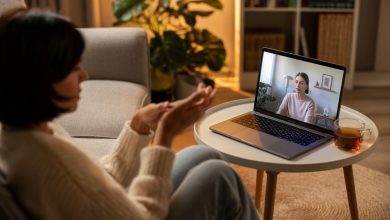Smart Toilets and Health Tracking: Too Much Info?
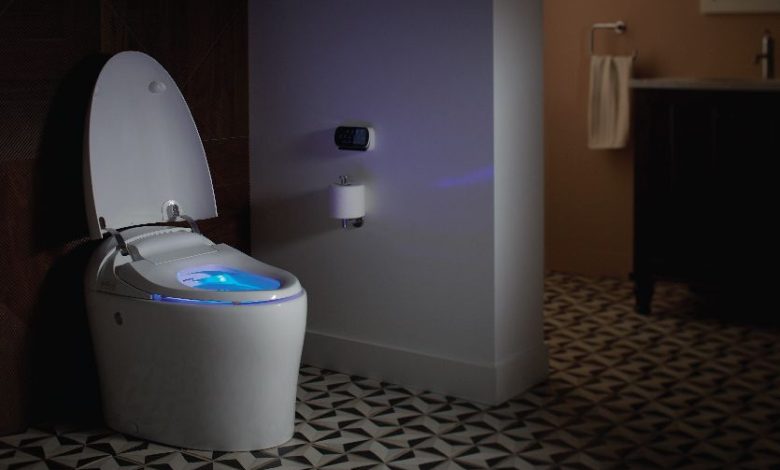
Smart toilets and health tracking too much info is a question at the heart of today’s digital health revolution. As technology enters our most private spaces, smart toilets promise to monitor health in real time—analyzing urine, stool, and even vital signs. But are we crossing a line? This article explores the science, benefits, risks, real-life stories, and tips for using smart toilets and health tracking devices wisely.
Introduction: Smart Toilets and Health Tracking Too Much Info
Smart toilets are no longer science fiction. They analyze what you flush, offering data on hydration, nutrition, infections, and even early disease warnings. Health tracking is everywhere—from watches to bathroom fixtures. But as we collect more data, are we learning too much, risking privacy, or simply getting overwhelmed?
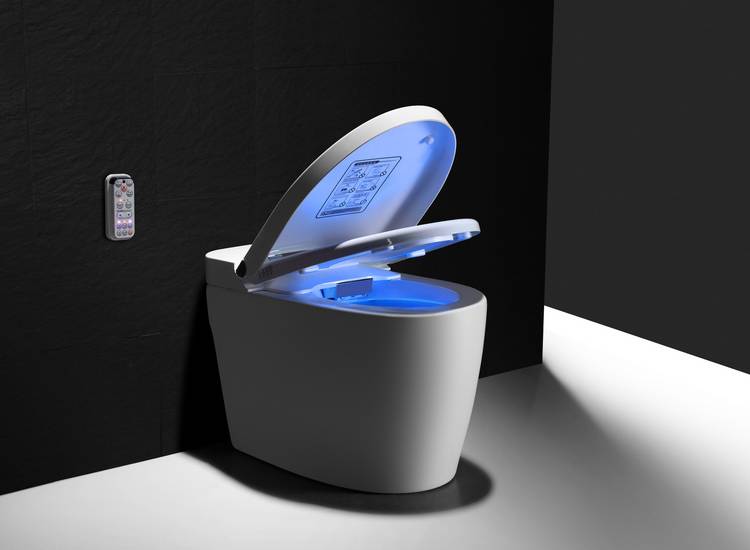
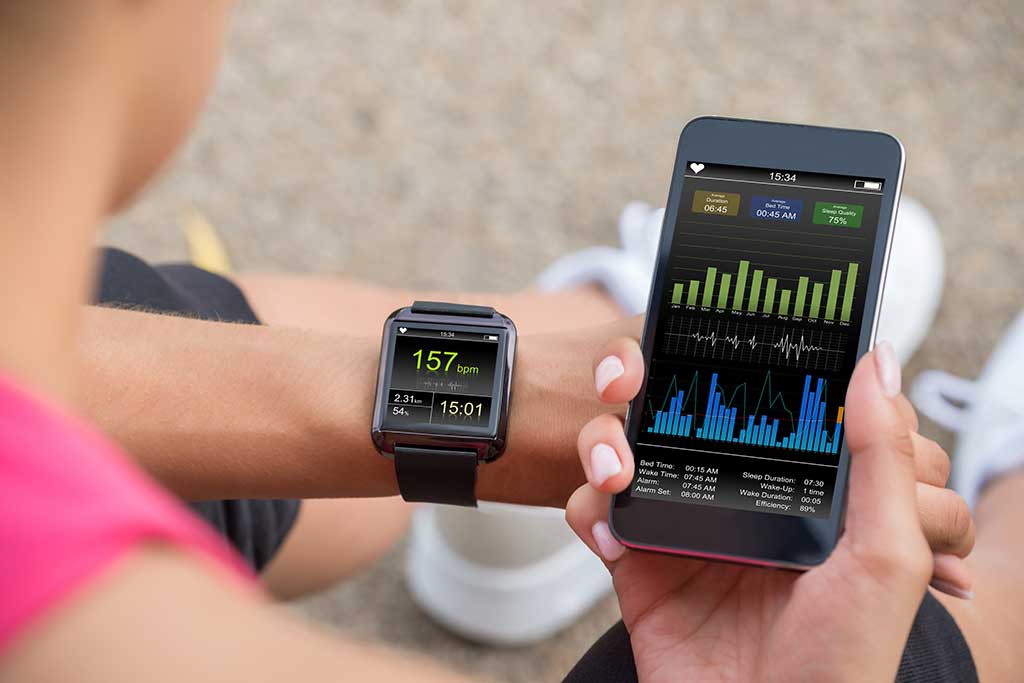
What Are Smart Toilets and How Do They Work
- Smart toilets use sensors and cameras to analyze urine, stool, and sometimes blood pressure or heart rate.
- They connect to apps or cloud services, sending health data to your phone or doctor.
- Some models test for glucose, proteins, bacteria, or dehydration.
- Data can be shared with healthcare providers for early warnings.
How it works:
- You use the toilet as usual.
- The toilet collects a sample and runs tests.
- Results are sent to your device, sometimes with advice or alerts.
Key Features of Smart Toilets and Health Tracking
- Automatic analysis: No need to collect samples or visit a lab.
- Real-time alerts: Get notified about possible health issues instantly.
- Integration with health apps: Data can be shared with your doctor.
- Personalized feedback: Tips on hydration, diet, or medication reminders.
- Early detection: Spot problems before symptoms appear.
- Remote monitoring: Useful for elderly or chronically ill people.
- Data storage: Trends and changes tracked over time.
Why Are Smart Toilets Becoming Popular
Smart Toilets and Health Tracking Too Much Info Why Now
- Aging populations: More people want to monitor health at home.
- Pandemic effects: COVID-19 increased interest in remote health monitoring.
- Tech advances: Cheaper sensors and better AI make smart toilets possible.
- Preventive care: Early warnings can reduce hospital visits and costs.
- Chronic disease management: Diabetes, kidney disease, and heart conditions benefit from daily tracking.

Smart Toilets vs Traditional Toilets Table
| Feature | Smart Toilets | Traditional Toilets |
|---|---|---|
| Health monitoring | Yes (sensors, analysis) | No |
| Data sharing | Possible (apps, cloud) | No |
| Early disease alerts | Yes | No |
| Cost | High (premium models) | Low to medium |
| Privacy concerns | High (data storage, sharing) | Low |
| Maintenance | Complex (needs cleaning, updates) | Simple |
| User experience | High-tech, sometimes complex | Simple, familiar |
The Science and Technology Behind Smart Toilets
H2: Smart Toilets and Health Tracking Too Much Info The Technology Explained
How Smart Toilets Analyze Your Health
- Sensors and Cameras: Detect color, consistency, and volume of urine and stool.
- Chemical Analysis: Test strips or microfluidic chips analyze for glucose, proteins, blood, and infection markers.
- AI Algorithms: Interpret results, compare with your health history, and flag abnormalities.
- Connectivity: Bluetooth or Wi-Fi sends results to your phone, doctor, or cloud dashboard.
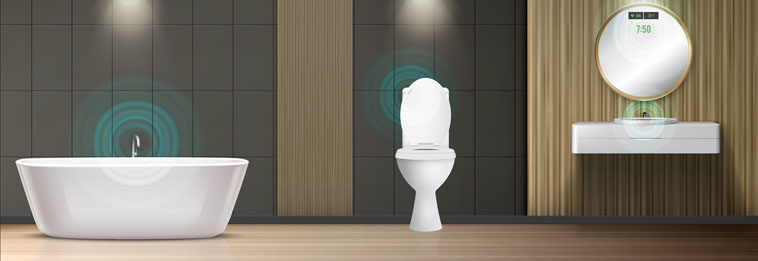
What Smart Toilets Can Detect
| Test/Feature | What It Checks For | Health Insights Provided |
|---|---|---|
| Urine color/clarity | Hydration, infection | Dehydration, UTI risk |
| Glucose/protein | Diabetes, kidney function | Early diabetes/kidney disease warning |
| Blood | GI bleeding, infection | Colon cancer, hemorrhoids |
| pH level | Diet, kidney health | Acid-base balance |
| Stool analysis | Consistency, blood, parasites | Digestive health, infection |
| Heart rate sensor | Pulse, stress | Cardiovascular risk |
H3: The Role of Artificial Intelligence
AI is central to smart toilets. It learns your normal patterns, detects subtle changes, and reduces false alarms. Over time, it can even predict risks before symptoms start.
The Ethics and Privacy Debate
H2: Smart Toilets and Health Tracking Too Much Info Ethics and Privacy
Data Privacy Concerns
- Sensitive Data: Health data is among the most private information you have.
- Cloud Storage Risks: Data breaches or leaks could expose intimate health details.
- Third-Party Access: Insurance companies, employers, or marketers might seek access to your health trends.
Regulatory Landscape
- HIPAA (USA): Some smart toilets fall under health privacy laws, but not all.
- GDPR (Europe): Requires explicit user consent for data collection and sharing.
“Health data from smart toilets could be a goldmine for hackers or marketers. Users must demand transparency and control.”
— Dr. Amaka Eze, Data Privacy Expert
The Psychology of Health Tracking
Smart Toilets and Health Tracking Too Much Info Information Overload
When Data Becomes Too Much
- Anxiety: Constant alerts about minor changes can cause unnecessary worry.
- Obsession: Some users develop health anxiety, fixating on every reading.
- Decision Fatigue: Too many data points can make it hard to know what’s important.
Balancing Awareness and Well-being
- Focus on trends, not single results.
- Ask your doctor to help interpret patterns.
- Limit notifications to critical alerts only.
The Business and Healthcare Impact of Smart Toilets
Smart Toilets and Health Tracking Too Much Info Business Implications
The Growing Market
- Industry Growth: The global smart toilet market is projected to reach billions by 2030, driven by aging populations, chronic disease management, and wellness trends.
- Key Players: Tech giants, medical device companies, and startups are all competing to develop smarter, more affordable devices.
- Healthcare Partnerships: Hospitals and clinics are piloting smart toilets for remote patient monitoring and early disease detection.

Cost-Benefit Analysis
| Factor | Potential Benefit | Possible Drawback |
|---|---|---|
| Early disease detection | Reduces hospitalizations, saves lives | May increase false alarms, overtesting |
| Remote monitoring | Cuts travel and wait times for patients | Requires reliable connectivity |
| Data-driven care | Enables personalized treatment | Data overload for doctors |
| Preventive health | Lowers long-term healthcare costs | Upfront investment in devices |
Insurance and Smart Toilets
- Coverage Trends: Some insurers are beginning to offer discounts or coverage for smart toilets, especially for patients with chronic diseases.
- Risk Assessment: Insurers may use anonymized data to better assess population health risks, but must navigate privacy laws.
Cultural and Social Perspectives
Smart Toilets and Health Tracking Too Much Info Around the World
Adoption Rates
- Japan: A leader in smart toilet technology, with wide adoption in homes, hospitals, and public restrooms.
- Europe: Growing interest, especially in elderly care and eco-friendly buildings.
- Africa & Latin America: Early-stage adoption, mostly in urban hospitals and wellness-focused homes.
Social Acceptance
- Privacy Concerns: Some cultures are wary of sharing health data, even with doctors.
- Stigma: Discussing bathroom habits is taboo in many societies, which can slow adoption.
Visual: Smart Toilet Ecosystem Map
| Stakeholder | Role/Interest | Key Concerns |
|---|---|---|
| Consumers | Health, convenience, peace of mind | Privacy, cost, usability |
| Doctors | Early detection, patient data | Data overload, accuracy |
| Insurers | Preventive care, cost reduction | Data security, ethical use |
| Tech Companies | Innovation, market share | Regulation, interoperability |
| Regulators | Public health, privacy protection | Compliance, enforcement |
Case Studies: Real Experiences with Smart Toilets
Case Study 1: The Diabetic Patient
A man with diabetes uses a smart toilet to monitor glucose in his urine. Early alerts help him adjust his diet and avoid hospital visits.
Case Study 2: The Elderly Woman
An 80-year-old in Tokyo uses a smart toilet that sends hydration and infection alerts to her daughter’s phone. It helps prevent urinary tract infections.
Case Study 3: The Health Enthusiast
A fitness coach tracks hydration, nutrition, and recovery with a smart toilet. He uses the data to optimize his workout and diet.
Case Study 4: The Family with Kids
Parents use a smart toilet to track their children’s hydration and detect early signs of illness, giving peace of mind.
Case Study 5: The Busy Executive
A Lagos executive uses a smart toilet to monitor stress and heart rate, helping manage work-life balance.
Case Study 6: The Remote Patient
A woman with kidney disease in rural Kenya uses a smart toilet linked to her clinic. Doctors adjust her treatment remotely.
Case Study 7: The Privacy-Conscious User
A tech worker worries about data leaks. She disables cloud features and stores health data locally.
Case Study 8: The Hospital Pilot
A hospital in Switzerland tests smart toilets for early infection detection, reducing outbreaks and improving patient care.
Case Study 9: The Athlete’s Performance Boost
A marathon runner in São Paulo uses a smart toilet to track hydration and recovery. Adjusting fluid intake based on daily readings helped her avoid cramps and improve race times.
Case Study 10: The Rural Health Project
In rural Peru, a health NGO deployed smart toilets in clinics. Early detection of kidney infections reduced hospitalizations and saved lives.
Case Study 11: The Smart Home Integration
A tech-savvy family in Lagos connected their smart toilet to a home health dashboard, tracking trends for the whole family and sharing alerts with their doctor.
Case Study 12: The Privacy Breach
A user in Europe discovered their smart toilet app was sending unencrypted data to third parties. After a public outcry, the company updated its privacy policy and added local storage options.
Case Study 13: The Corporate Wellness Program
A multinational firm in Singapore installed smart toilets in its headquarters. Employees received monthly wellness reports and hydration tips, leading to fewer sick days and higher engagement.
Case Study 14: The Smart City Pilot
A city in Scandinavia added smart toilets to public parks. Aggregated, anonymized data helped city officials spot flu outbreaks earlier and improve public hygiene.
Case Study 15: The Startup Success
A healthtech startup in California launched a subscription-based smart toilet for home users. Their business model included telehealth consultations based on toilet data, attracting thousands of users.
Case Study 16: The Elder Care Facility
A retirement home in Germany equipped all bathrooms with smart toilets. Nurses received alerts about dehydration or infection, improving care for residents with dementia.

Actionable Framework: How to Evaluate a Smart Toilet for Your Home or Business
- Assess Your Needs:
- Chronic illness management? General wellness? Elder care?
- Check Privacy Features:
- Local vs. cloud storage, encryption, data sharing controls.
- Evaluate Integration:
- Does it connect with your existing health apps or EHR systems?
- Review Maintenance Requirements:
- Cleaning, software updates, technical support.
- Consider Cost and ROI:
- Upfront price, subscription fees, potential health savings.
- Read User Reviews:
- Look for feedback on accuracy, usability, and customer support.
Visual: Smart Toilet User Experience Flow
- User flushes
- Toilet collects and analyzes sample
- AI interprets results
- App displays summary and trends
- (Optional) Alert sent to doctor or caregiver
- User receives tips or reminders
The Future of Smart Toilets and Health Tracking
Smart Toilets and Health Tracking Too Much Info What’s Next?
- Integration with wearables: Combine toilet data with smartwatches for a full health picture.
- Personalized medicine: AI recommends diet, hydration, or medication changes.
- Public health: Aggregated, anonymized data could help track outbreaks or health trends in cities.
- Eco-friendly features: Some models use less water and offer waste recycling insights.
More Tips for Smart Toilet Users
- Review privacy settings regularly and update permissions after app updates.
- Educate all household members about what data is collected and how to use results.
- Set realistic expectations: Smart toilets are a tool, not a replacement for regular doctor visits.
- Stay informed: Follow news about device recalls, software updates, and privacy changes.
Expert Quotes
“Smart toilets can empower patients and doctors, but only if privacy and data security are taken seriously.”
— Dr. Samuel Ojo, Digital Health Specialist
“Too much health data can be overwhelming. Focus on big trends and talk to your doctor about what matters most.”
— Dr. Maria Gomez, Family Physician
Looking Forward: The Next Decade of Smart Health Tracking
- Personalized AI Coaching: Toilets may soon offer tailored health advice, meal planning, and medication reminders.
- Integration with Genomics: Combining waste analysis with genetic data for even more precise health monitoring.
- Global Health Data Sharing: With strong privacy controls, aggregated data could help track pandemics, antibiotic resistance, and nutrition trends worldwide.
Pros and Cons Table
| Pros of Smart Toilets and Health Tracking | Cons of Smart Toilets and Health Tracking |
|---|---|
| Early disease detection | Privacy risks (data leaks, hacking) |
| Convenience, no lab visits | High cost |
| Personalized health advice | Data overload (too much info) |
| Better chronic disease management | Maintenance and tech glitches |
| Useful for elderly or remote patients | Not always accurate, false alarms |
| Can help reduce healthcare costs | May cause anxiety or obsession |
Tips for Using Smart Toilets and Health Trackers Safely
- Check privacy settings: Store data locally if possible, and read the privacy policy.
- Share data wisely: Only send info to trusted doctors or family.
- Don’t obsess: Use trends, not single readings, to guide decisions.
- Maintain your device: Clean sensors and update software regularly.
- Consult professionals: Don’t self-diagnose or panic over minor changes.
- Balance tech and intuition: Listen to your body, not just the app.
- Secure your network: Use strong passwords and secure Wi-Fi.
- Educate your family: Make sure all users understand how the device works.
Frequently Asked Questions FAQ
1. What is a smart toilet?
A smart toilet uses sensors to analyze urine, stool, and sometimes vital signs, sending health data to your device.
2. Are smart toilets safe?
They are generally safe, but privacy and data security are concerns.
3. Who benefits most from smart toilets?
People with chronic illnesses, the elderly, and those who want preventive care.
4. Can smart toilets replace doctors?
No, they are a tool for early detection and monitoring, not a substitute for medical advice.
5. How accurate are smart toilets?
Accuracy varies by model and maintenance. Always confirm results with a doctor.
6. What about privacy?
Choose devices with strong privacy controls and be careful who accesses your data.
7. Are smart toilets expensive?
Yes, most are premium products, but prices may drop as technology spreads.
8. Can kids use smart toilets?
Yes, but parents should monitor the data and explain results.
9. Will insurance cover smart toilets?
Some health plans may cover them for medical needs, but coverage varies.
10. What if I get too much information?
Focus on trends, not every detail. Talk to a health professional if you feel anxious.
Conclusion
Smart toilets and health tracking too much info is a question every modern family, patient, and tech lover must answer. These devices offer real benefits—early detection, convenience, and better health—but also bring new risks, from privacy to information overload. Use smart toilets wisely, balance data with common sense, and remember: sometimes, less information is more.

